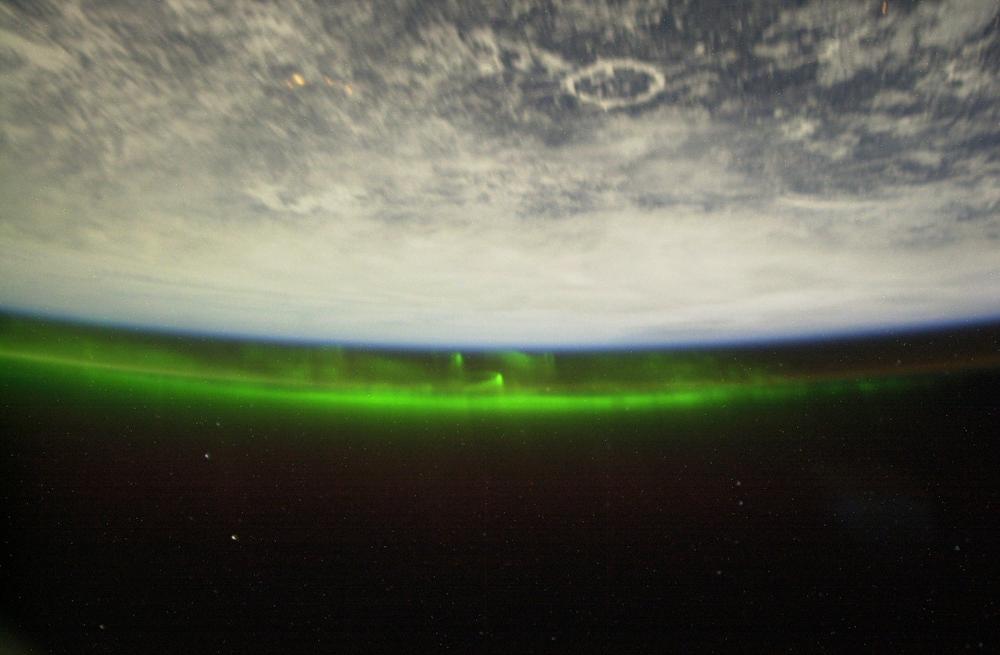First, where will your picosatellite go? It’s nearly a given that your picosatellite will go to low earth orbit (LEO), a broad band ranging from about 150km up to perhaps 600km. This is the region that also has many science satellites and the International Space Station (ISS). It is in and below the ionosphere, the very, very thin part of the atmosphere that also coincides with much of the Earth’s magnetic field.
The Earth’s magnetic field shields us from the Sun’s most fierce activity. High-energy particles, flare emissions, and coronal mass ejections (CMEs; basically blobs of Sun-stuff) get shunted by the magnetic field before they can reach ground. Where the magnetic field lines dip near the poles, this energy expresses itself as the aurora (see Figure 1-2).
Above the ionosphere, the space environment can be hostile because of solar activity. Below it, the radiation risks are much lower. This is why the ISS is kept in LEO. LEO is, at heart, about as safe as space can get. It’s also where your picosatellite is likely to live.
A typical LEO orbit has about a 90 minute period. That is, it rotates around the Earth once every 90 minutes, doing about 15 orbits per day. Orbits can be positioned near the Earth’s equator (equatorial orbits) or loop from the North to South Pole (polar orbits). Similarly, orbits can be nearly circular, or be highly eccentric—coming closer to the Earth at one end of the orbit, and then moving far away at the other.
Your orbit is entirely determined by what your rocket provider has sold you. At the hobbyist level, you’re going to most likely get a standard 250km or so nearly circular orbit, either equatorial or polar. Such an orbit lasts (because of drag by the tenuous ionosphere) from 3 to 16 weeks before the satellite will suffer a fiery reentry.
At picosatellite masses, this means your satellite will go up and not return. You have less than three months to gather data. The picosatellite will then, essentially, vaporize neatly upon reentry (no space junk risk!)
Get DIY Satellite Platforms now with the O’Reilly learning platform.
O’Reilly members experience books, live events, courses curated by job role, and more from O’Reilly and nearly 200 top publishers.


